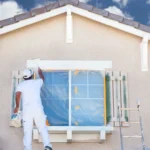Selling a home quickly and for top dollar often hinges on one critical factor: presentation. Home staging is the strategic process of preparing a property to appeal to the highest number of potential buyers, helping them visualize the space as their future home.
This comprehensive guide will walk you through every aspect of staging a home for a quick sale, from decluttering and cleaning to lighting, layout, and final touches.
Why Home Staging Matters
First impressions are powerful. According to the National Association of Realtors (NAR), 82% of buyers’ agents said staging a home made it easier for a buyer to visualize the property as a future home. Staged homes also tend to sell faster and for more money than non-staged homes. In today’s competitive market, staging is no longer optional—it’s essential.
Key Benefits of Home Staging
| Benefit | Description |
|---|---|
| Faster Sale | Staged homes typically spend less time on the market. |
| Higher Offers | Buyers are willing to pay more for a move-in-ready, well-presented home. |
| Broad Appeal | Staging helps neutralize the home, appealing to a wider audience. |
| Highlight Strengths | Proper staging emphasizes a home’s best features. |
Step-by-Step Home Staging Guide

Declutter Ruthlessly
Buyers want to see the home, not your belongings. Remove excess furniture, personal items, and anything that makes the space feel cramped. Store away collections, family photos, and knick-knacks. The goal is to create a clean, spacious, and neutral environment.
Checklist:
- Clear off countertops and tables
- Pack up non-essential items
- Organize closets and cabinets (buyers look inside!)
Deep Clean Everything
A clean home feels well-maintained and move-in ready. Focus on every surface: floors, walls, ceilings, appliances, and fixtures.
High-Impact Areas to Clean:
- Kitchen (especially appliances)
- Bathrooms (tiles, grout, mirrors)
- Windows and window sills
- Carpets and flooring
Depersonalize
Potential buyers need to imagine themselves living in the space. Remove personal items such as family photos, religious symbols, and personalized décor. Neutral doesn’t mean boring—choose tasteful, universally appealing decor.
Improve Lighting
Lighting sets the mood and can make or break a buyer’s impression. Let in as much natural light as possible and add lighting where needed.
Tips:
- Open curtains and blinds
- Use daylight-balanced LED bulbs
- Add lamps to dim corners
Optimize Furniture Layout
The right layout can make rooms feel bigger and more functional. Avoid blocking pathways and highlight the room’s purpose.
Living Room Layout Ideas:
- Arrange seating around a focal point (like a fireplace or TV)
- Pull furniture away from walls to create cozy conversation areas
- Use area rugs to define spaces
Neutralize Paint Colors
Bold colors can be off-putting. Stick with light, neutral tones like beige, gray, or off-white. These shades create a blank canvas and reflect light better.
Boost Curb Appeal
First impressions start at the curb. Make sure the exterior is inviting and well-maintained.
Enhancement Ideas:
- Mow the lawn and trim bushes
- Paint or clean the front door
- Add a new welcome mat and potted plants
Add Inviting Touches
Small touches can make a big difference. Add fresh flowers, light scented candles (mild fragrances), or set the dining table with stylish place settings.
Ideas for a Welcoming Atmosphere:
- Place fresh towels in the bathroom
- Display a bowl of fresh fruit in the kitchen
- Use soft throws and pillows in the living room
Advanced Home Staging Techniques
Highlight Focal Points
Draw attention to architectural details like fireplaces, bay windows, or built-in shelves by arranging furniture or lighting to emphasize them.
Stage Key Rooms First
If you’re short on time or budget, prioritize staging:
- Living Room
- Primary Bedroom
- Kitchen
- Dining Room
Use Mirrors Strategically
Mirrors can make small rooms appear larger and brighter. Place them to reflect natural light or attractive features.
Emphasize Storage Space
Organized closets, pantries, and storage areas are a big selling point. Show how efficiently the home can be used.
Virtual Staging
For vacant homes or budget-conscious sellers, virtual staging is an option. Digital furniture and décor are added to listing photos to show the potential of empty spaces.
Pros:
- Cost-effective
- Helps buyers visualize space
Cons:
- Not helpful for in-person showings
- Can lead to mismatched expectations
Home Staging Mistakes to Avoid
| Mistake | Why It’s a Problem |
|---|---|
| Over-staging | Feels unnatural or staged; less authentic |
| Ignoring odors | Smells can be a dealbreaker |
| Leaving pets at home | Distracts buyers; allergens are a concern |
| Blocking natural light | Makes rooms feel smaller |
Budget-Friendly Staging Tips

You don’t need a professional to stage effectively. With a little creativity and elbow grease, you can transform your space on a budget.
Low-Cost Tips:
- Borrow or rent modern furniture
- Shop discount home stores for decor
- DIY repairs and painting
- Use slipcovers to refresh old sofas
Final Walkthrough: A Stager’s Checklist
Before listing your home, do a final check:
- Are all rooms clean and clutter-free?
- Does the house smell fresh?
- Are all lights working and consistent in color?
- Is the curb appeal strong?
- Are personal items removed?
- Do rooms feel inviting and functional?
Conclusion
Staging your home is a proven way to speed up the sale process and potentially increase your final sale price. It doesn’t have to be expensive or complicated—just thoughtful and buyer-focused.
By following the steps and strategies laid out in this guide, you can make your property stand out in a competitive market. Every detail matters when you’re aiming for a quick, successful home sale.
Start with the basics, focus on high-impact areas, and finish with subtle touches that make your house feel like home. The result? A quicker sale, a better offer, and a smoother move forward.






